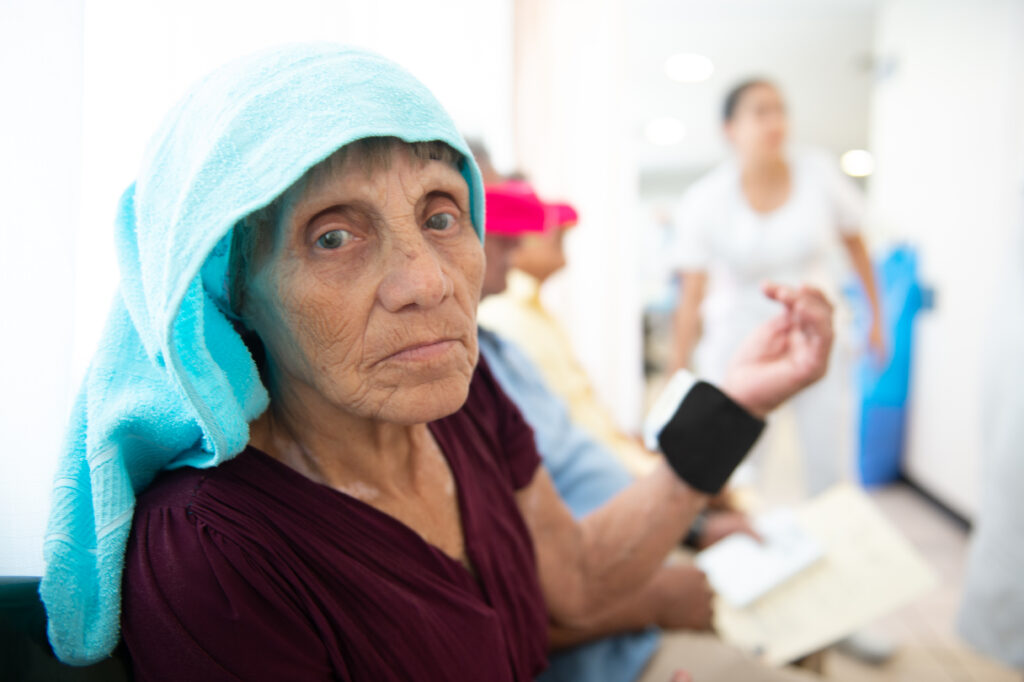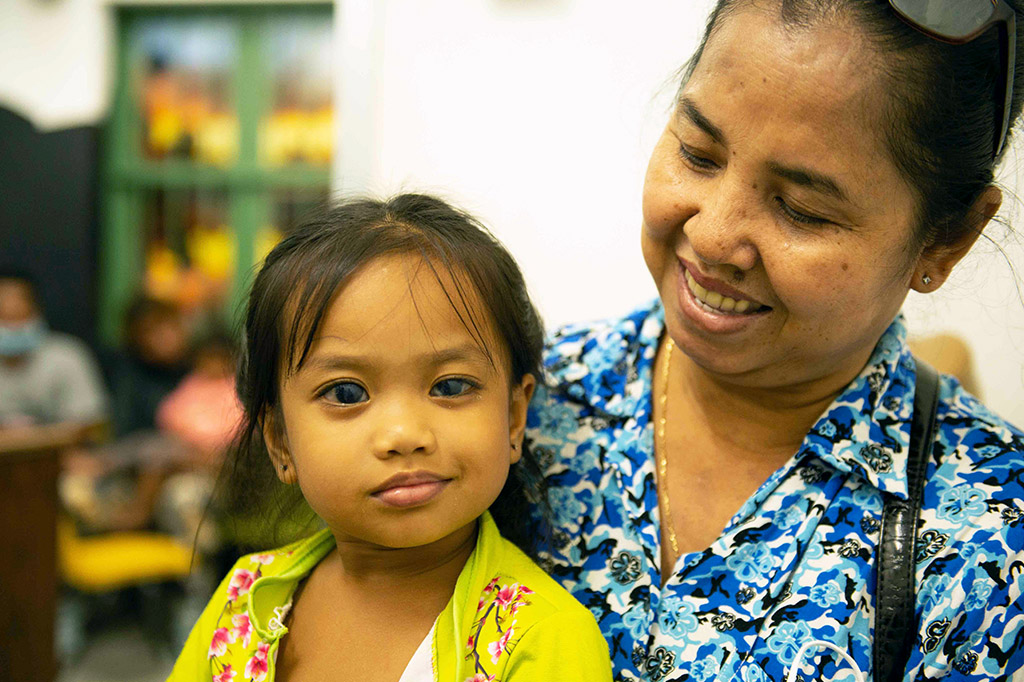Cataracts
Since 1974, SEE has worked diligently to reduce the number of cataract cases around the world. Our network of volunteer surgeons provides free treatment to thousands of cataract patients every year, as well as skill-sharing and training on appropriate surgical techniques to help strengthen local health care infrastructure worldwide.
What are Cataracts?
In healthy eyes, light is able to pass through the lens back to the retina, allowing us to see detail. A cataract creates a cloud on that normally transparent lens, blurring vision and eventually leading to blindness.
Most cataracts are related to aging, and are very common in older people. Essentially, the lens of the eye accumulates proteins and sugars throughout one’s life and, ultimately, this accumulation leads to the clouding of the lens and vision trouble.
What are symptoms of Cataracts?
Someone with cataracts might not have any symptoms at first, when cataracts are mild. But as cataracts grow, they can cause changes in vision. For example, a person with cataracts may notice that:
- Vision is cloudy or blurry
- Colors look faded
- Poor vision at night
- Lamps, sunlight, or headlights seem too bright
- A halo around lights
- Seeing double (this sometimes goes away as the cataract gets bigger)
- The need to change the prescription for your glasses often
(Source: National Eye Institute, 2022)

Cataracts cause a third of worldwide blindness
According to the World Health Organization, cataracts affect approximately 65.2 million people and cause moderate to severe vision loss in over 80% cases. As populations age and average life expectancy continues to increase worldwide, the number of people with cataracts will continue to grow.
(Source: World Health Organization, 2019)
Cataracts are relatively simple to treat and remove surgically, but access to eye care and the appropriate resources is extremely limited in underserved communities. Unfortunately, 99% of people with cataracts live in these underserved areas.
Your donation will save someone’s sight
Risk Factors
Although mainly the result of aging, cataracts can affect anyone. Most people do not show symptoms of cataracts until at least the age of 40, cataracts can affect young adults and children. Hereditary, disease, eye injury, and smoking could cause cataracts to develop at an earlier age.
You may be at risk for cataracts if you:
- Have certain health problems, like diabetes
- Smoke
- Drink too much alcohol
- Have a family history of cataracts
- Have had an eye injury, eye surgery, or radiation treatment on your upper body
- Have spent a lot of time in the sun
- Take steroids (medicines used to treat a variety of health problems, like arthritis and rashes)
(Source: National Eye Institute, 2022)

There is no way to completely prevent cataracts
There is no way to completely prevent cataracts, however, there are a few steps you can take to lower your risk of cataracts, such as:
- Wear sunglasses and a hat with a brim to block the sun
- Avoid or quit smoking
- Eat healthy, and include dark, leafy greens like spinach, kale, and collard greens in your diet
- Get a dilated eye exam once every two years
(Source: National Eye Institute, 2022)
SEE International & Cataracts Around the World
There are two ways to remove a cataract: Phacoemulsification and MSICS.
Phacoemulsification uses ultrasound energy, and is highly effective at removing soft, early cataracts of the type that we typically see in the United States. It’s more expensive, though, and less suited to advanced cataracts.
MSICS is a manual technique, and better suited to the advanced, blinding cataracts we often see in the poorer parts of the world. It can be done at a material cost of about $25 per case in some regions and a procedure can take only about 10 minutes.
Both techniques are highly effective and can reliably restore the sight to people blinded by cataracts in almost every case. SEE doctors traveling in resource poor areas typically prefer the MSICS technique for its low cost and technology dependence, its efficacy, and its adaptability to even the most advanced of cataracts. In addition, SEE teaches the MSICS technique to hundreds of doctors each year, extending its impact and potential to cure blindness with each new doctor introduced to the technique
For those seeking a deeper dive, our Chief Medical Officer Dr. Jeff Levenson presented a TED Talk describing the invention of the MSICS technique, and its potential to end needless blindness in the world.
Conditions We Treat
Get Our Monthly Updates
Connect With SEE
Learn More
Donate
(805) 380-7522
Mail donations to:
SEE International
PO Box 981263
W. Sacramento, CA 95798-1263
Home office address:
6500 Hollister, Suite 120
Goleta, CA 93117
Tax ID: #31-1682275



